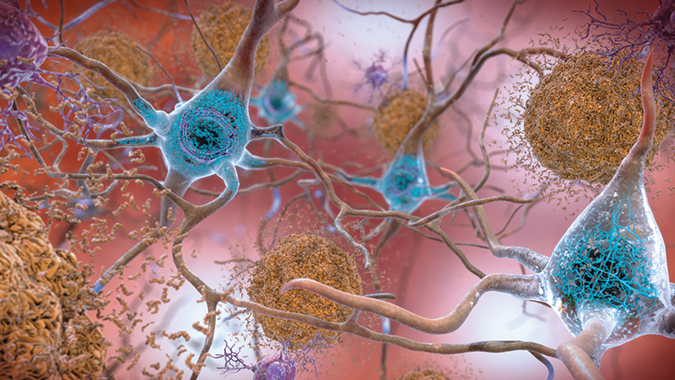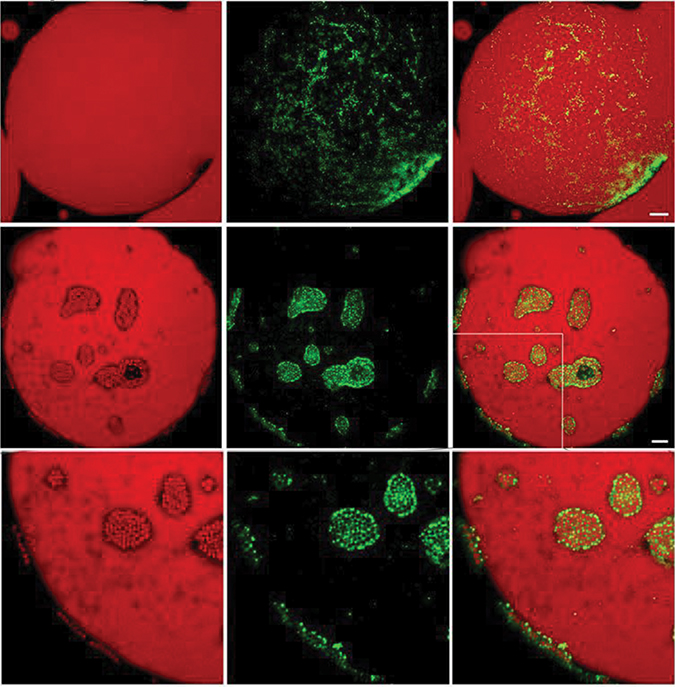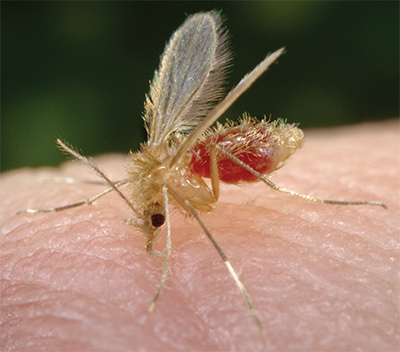From the journals: August 2019
How an oyster protein drives shell formation
Matrix proteins rich in acidic asparagine and glutamine residues are needed to form biominerals such as bones and shells, with the carboxylates of these residues serving as possible calcium-binding groups. Dong Yang and a team at Tsinghua University have characterized the pearl oyster protein N25, which contains high proportions of proline, serine and basic lysine residues, finding that it also affects biomineral formation, attaching to crystal surfaces and delaying a morphological transition. These results, published in the Journal of Biological Chemistry, shed light on biomineral formation mechanisms and raise intriguing questions about potential synergisms among distinct matrix proteins.
A better way to count eicosanoids
Eicosanoids are signaling lipids that play a role in pain and inflammation. They function in diseases such as asthma and cancer, making them clinically relevant biomarkers. In a paper published in the Journal of Lipid Research, Cristina Gómez and an international team present an improved method of extracting and quantifying eicosanoids from human urine, suitable for use with groups in large and diverse clinical trials. The included metabolites cover major synthetic pathways, including prostaglandins, leukotrienes and isoprostanes.
The researchers were able to extract 32 eicosanoids rapidly, reliably and precisely from urine, with average extraction recoveries of over 90%, then quantify them by liquid chromatography and mass spectroscopy. Their method includes a faster and more streamlined protocol that is suitable for large-scale studies and small sample volumes (1.4 mL of urine for the complete workflow). This method could be used for numerous types of studies of various populations, including children.
Making neurotoxic plaques miss their mark
A hallmark of Alzheimer’s disease is the aggregation of beta-amyloid plaques in the brain that exhibit neurotoxic properties and contribute to neurodegeneration. In the Journal of Biological Chemistry, British researchers report that activating an endogenous enzyme that chops off beta-amyloid targets from the surface of neurons curbs the neurotoxic effects of the plaques.
Oligomers of beta-amyloid, or ABOs, are particularly toxic and bind to receptors on the neuronal surface, triggering signaling pathways and the generation of reactive oxygen species, which impair cell function and survival. Recent research has shown that one of these receptors, cellular prion protein, or PrPC, can be removed from the cell surface by the enzyme ADAM10. Heledd Jarosz–Griffiths and colleagues at the University of Manchester and the University of Oxford sought to increase the activity of this enzyme and, in turn, reduce the toxic activity of ABOs.
Previous work has shown that the muscarinic agonist carbachol and the vitamin A analog aciretin can activate ADAM10. Jarosz–Griffiths’ team exposed human cell types to these compounds and found that either could promote shedding of PrPC from the surface of neuroblastoma cells or induced pluripotent stem cell-derived neurons. These molecules blocked the binding of ABO and reduced its toxic effects. Knockdown of ADAM10 diminished these benefits, indicating that activation of this specific enzyme is critical for PrPC shedding and protection from ABOs.
These results demonstrate that reducing neuronal targets for ABOs by activating ADAM10 could have significant therapeutic potential for Alzheimer’s disease patients.
— Jonathan Griffin
 In the Alzheimer’s-affected brain, abnormal levels of beta-amyloid protein clump together to form plaques, shown in brown, that accumulate between neurons, disrupting cell function and survival.National Institute on Aging, NIH
In the Alzheimer’s-affected brain, abnormal levels of beta-amyloid protein clump together to form plaques, shown in brown, that accumulate between neurons, disrupting cell function and survival.National Institute on Aging, NIH
Crystal structures could improve pain meds
COX-2 is a target of the nonsteroidal anti-inflammatory drugs, or NSAIDs, used to manage pain and fever. COX inhibitors containing an indomethacin scaffold are selective for the inflammation-induced COX-2 over the constitutively expressed COX-1, but the basis for this selectivity has not been established definitively. Shu Xu and a team of U.S. researchers have reported in the Journal of Biological Chemistry the first crystal structures of COX-2 in which the intact derivatives of the NSAID indomethacin are fully visible, confirming that compound binding extends to a unique lobby of the protein and providing critical details to inform future inhibitor design.
How a tree responds to infection
Fast-growing trees of the Paulownia genus have been cultivated in China for centuries. They commonly are found in parks and gardens, and the wood is used to make furniture and musical instruments. Phytoplasma bacteria pose a major threat to these trees by causing Paulownia witches’ broom, or PaWB, a disease characterized by stunted growth and other malformations. Phytoplasmas infect more than 1,000 plant species, resulting in significant economic losses in agriculture and horticulture.
Post-translational modifications such as lysine acetylation and succinylation are known to be involved in plant response to pathogens. However, the functions of these modifications during phytoplasma infection had not been explored previously. In a study published in the journal Molecular & Cellular Proteomics, Yabing Cao and colleagues from the Henan Agricultural University in China write that acetylation may be more important than succinylation in response to phytoplasma infection in Paulownia tomentosa seedlings. They showed that rubisco and protochlorophyllide reductase, enzymes needed for chlorophyll and starch synthesis, are acetylated at specific sites in phytoplasma-infected seedlings, leading to modified enzymatic activity.
White fat no more — hope for an anti-obesity drug
Fat cells, or adipocytes, come in different flavors based on their macroscopic appearance; namely, they can be white, brown or brite (brown-in-white). White adipocytes store lipids (fatty acids and triglyceride) within a single lipid droplet and have few mitochondria. Brown adipocytes (typically found in newborns) have many mitochondria and help maintain body temperature during long-term cold exposure through nonshivering thermogenesis involving what researchers call a “futile cycle” of proton transport across the inner mitochondrial membrane. Brite adipocytes resemble both types: They can have several lipid droplets and contain many mitochondria.
Studies in rodents have shown that mature white adipocytes can become brite in response to cold or beta-adrenergic stimulation. This transformation and the associated ability to catabolize fatty acids through mitochondria is of interest as a treatment for obesity. In a paper published in the Journal of Lipid Research, Mi-Jeong Lee and a team of researchers from U.S. universities write that treatment of human white adipocytes with the diabetes drug rosiglitazone, or rosi, induces white adipocytes to become more britelike.
The researchers cultured explants of human visceral and abdominal subcutaneous fat tissues for seven days with or without rosi. The drug induced transcriptional changes that resembled the brite adipocyte profile and key players of fatty acid oxidation. Further transformation was visible in the formation of small lipid droplets around the adipocyte central lipid droplet and the rearranged mitochondria surrounding the small lipid droplets. This study supports the idea that a pharmacological intervention to treat obesity and its associated metabolic diseases is possible and provides several potential targets to test for this approach.
— Nathalie Gerassimov
 When cultured white adipocytes are treated with the diabetes drug rosiglitazone, they become more like brite adipocytes, as shown by the formation of small lipid droplets decorated with rearranged mitochondria (green large ovals in a sea of red lipid in the second and third panel of images).Lee et al/JLR
When cultured white adipocytes are treated with the diabetes drug rosiglitazone, they become more like brite adipocytes, as shown by the formation of small lipid droplets decorated with rearranged mitochondria (green large ovals in a sea of red lipid in the second and third panel of images).Lee et al/JLR
Aging and cataract formation
Crystallin proteins within the eye lens are some of the longest-lived proteins in the body but are prone to accumulation of modifications that contribute to cataract formation. To uncover the molecular consequences of isomerization modifications in alpha A- and alpha B-crystallin proteins, Yana Lyon and colleagues from the U.S. and the U.K. examined four sites crucial for oligomerization using mass spectrometry, molecular dynamics simulations and other strategies. In their study in the Journal of Biological Chemistry, they report that these modifications interfere with oligomer assembly, which could lead to increased aggregation of damaged molecules and contribute to cataract formation.
I’m not fat, I’m fluffy — refining obesity risks
More than 70% percent of American adults have a body mass index above 25, defined as obese or overweight, indicating a great societal and individual health risk. But BMI is a far-from-perfect health metric, with fit actors like Dwayne “The Rock” Johnson scoring in the obese range. Obesity metrics that better assess individual health risk are needed.
In a paper published in the Journal of Lipid Research, Wahyu Wulaningsih and colleagues in the U.K. analyzed the correlation between circulating metabolites and several obesity metrics, postulating that a more sophisticated understanding of weight and associated cardiovascular disease risk would allow for earlier and more focused intervention.
The researcher correlated the concentrations of 233 circulating metabolites in 900 British men and women ages 60 to 64 to their BMI, waist-to-hip ratio and android-to-gynoid fat ratio. The latter two are relevant because android (waist) obesity is considered more of a health risk than gynoid (hips) obesity. As expected, there was a strong correlation (more than 54%) of the metabolites with all three obesity metrics. BMI had the highest correlation, with 168 out of 233 metabolites, or 72%. Of the metabolites, high-density lipoprotein particle size was most highly correlated with BMI.
Furthermore, BMI measurements starting at childhood were available for most participants, and the study also correlated these with current metabolite levels. The researchers identified an inverse association between BMI at age 7 and glucose or glycoprotein at ages 60 to 64. Additionally, the data showed an inverse association between postadolescent BMI gains and one metabolite.
This study supports the importance of longitudinal measures of adiposity and metabolomic profiling in the investigation of obesity-related health risks.
Attacking malaria’s DNA
Although medication is available for malaria infections, drug-resistant strains of the parasite continue to emerge. As such, there is an increasing need for new drug targets. Pratap Vydyam and colleagues at the University of Hyderabad identified the DNA double-strand break repair pathway as a vulnerability in the malaria-causing parasite Plasmodium falciparum. In a study published in the Journal of Biological Chemistry, the authors used in silico screening to find that the compound B02 binds and inhibits the recombinase protein PfRad51 with high affinity, preventing the parasite from repairing its DNA. They also discovered a synergy between B02 and anti-malarial drugs chloroquine and artemisinin.
Tracking gene expression in Leishmania parasites
 The phlebotomine sandfly is the primary vector of Leishmania parasites. Agencia ID/NIH Flickr Leishmaniasis is a parasitic disease spread by the bites of phlebotomine sandflies. The sandflies can only transfer in the infective stage of the parasite, known as a promastigote, during blood meals. The promastigotes are taken up by macrophages, where they transform into the tissue stage of the parasite, known as an amastigote. The amastigotes then replicate, destroying the host macrophage, and infect the next round of macrophages, often leading to cutaneous or visceral leishmaniasis in humans. A more common cutaneous leishmaniasis results in an open sore at the bite site that can leave a disfiguring scar, causing some patients to be shunned in their communities. Symptoms of more serious forms of visceral leishmaniasis include fever and swelling of the spleen and liver; if left untreated, they are typically fatal.
The phlebotomine sandfly is the primary vector of Leishmania parasites. Agencia ID/NIH Flickr Leishmaniasis is a parasitic disease spread by the bites of phlebotomine sandflies. The sandflies can only transfer in the infective stage of the parasite, known as a promastigote, during blood meals. The promastigotes are taken up by macrophages, where they transform into the tissue stage of the parasite, known as an amastigote. The amastigotes then replicate, destroying the host macrophage, and infect the next round of macrophages, often leading to cutaneous or visceral leishmaniasis in humans. A more common cutaneous leishmaniasis results in an open sore at the bite site that can leave a disfiguring scar, causing some patients to be shunned in their communities. Symptoms of more serious forms of visceral leishmaniasis include fever and swelling of the spleen and liver; if left untreated, they are typically fatal.
Leishmania parasites lack promoter-mediated regulation of transcription. Gene regulation is instead controlled primarily by post-transcriptional mechanisms, such as RNA-binding proteins, or RBPs, that interact with messenger RNA to form ribonucleoprotein complexes. These complexes direct trafficking and processing of the mRNA from when it is synthesized until it decays. Environmental stimuli can affect the localization of these complexes and enhance or reduce the rate of translation or target transcripts for degradation. However, few RBPs or other transregulators have been characterized in Leishmania lifecycle progression.
Pegine Walrad and colleagues at the University of York describe the mRNA-bound proteome of Leishmania mexicana at different lifecycle stages in a study in the journal Molecular & Cellular Proteomics. They write that their findings support a low correlation between protein expression and transcript expression, consistent with the idea that the gene expression is regulated by post-transcriptional mechanisms.
The researchers also show that more than 250 RBPs exhibit stage-specific expression. Their analysis suggests that RBP protein expression does not correlate to RNA association, indicating that RPBs may be post-translationally modified to regulate stability and binding potential. RBPs may serve as useful targets for anti-leishmanial treatments due to their low homology with other organisms.
— Kerri Beth Slaughter
The Krabbe proteome in a mouse model
Krabbe disease is a lysosomal storage disorder that disrupts myelin turnover in the nervous system. This autosomal recessive disease affects 1 in 100,000 people in the U.S., and there is no known cure. Krabbe disease is associated with impaired degradation of the sphingolipid psychosine, and scientists believe that buildup of this cytotoxic lipid is the main cause of demyelination. An animal model known as the twitcher mouse has been used for metabolic profiling, but further studies are needed to understand the proteome changes in Krabbe disease.
In a study published in the journal Molecular & Cellular Proteomics, Davide Pellegrini and colleagues in Italy and the Netherlands write that they used laser capture microdissection combined with microproteomics to identify more than 400 protein groups that showed expression differences between wild-type and twitcher mice. Results suggest that processes related to inflammatory and immune response as well as leukocyte infiltration were upregulated in the twitcher mice. Future studies will address proteome changes in younger twitcher mice to understand how these dysregulated biological pathways are linked to Krabbe disease pathogenesis.
Improving cancer drug evaluation
Inhibiting histone lysine demethylase, or KDM, enzymes has shown promise in treating cancers such as leukemia. However, current screening methods for these inhibitors are indirect and may not show accurately how specific targets are affected. Cristina Mascaró and an international team report in the Journal of Biological Chemistry that they have developed a novel immunoassay that uses a biotinylated chemoprobe capable of selectively binding to KDM1A. The results demonstrated that the assay could be applied to analyze the pharmacokinetics and pharmacodynamics of the leukemia drug ORY-1001 in tissue extracts.
Enjoy reading ASBMB Today?
Become a member to receive the print edition four times a year and the digital edition monthly.
Learn moreGet the latest from ASBMB Today
Enter your email address, and we’ll send you a weekly email with recent articles, interviews and more.
Latest in Science
Science highlights or most popular articles

E-cigarettes drive irreversible lung damage via free radicals
E-cigarettes are often thought to be safer because they lack many of the carcinogens found in tobacco cigarettes. However, scientists recently found that exposure to e-cigarette vapor can cause severe, irreversible lung damage.

Using DNA barcodes to capture local biodiversity
Undergraduate at the University of California, Santa Barbara, leads citizen science initiative to engage the public in DNA barcoding to catalog local biodiversity, fostering community involvement in science.

Targeting Toxoplasma parasites and their protein accomplices
Researchers identify that a Toxoplasma gondii enzyme drives parasite's survival. Read more about this recent study from the Journal of Lipid Research.

Scavenger protein receptor aids the transport of lipoproteins
Scientists elucidated how two major splice variants of scavenger receptors affect cellular localization in endothelial cells. Read more about this recent study from the Journal of Lipid Research.

Fat cells are a culprit in osteoporosis
Scientists reveal that lipid transfer from bone marrow adipocytes to osteoblasts impairs bone formation by downregulating osteogenic proteins and inducing ferroptosis. Read more about this recent study from the Journal of Lipid Research.

Unraveling oncogenesis: What makes cancer tick?
Learn about the ASBMB 2025 symposium on oncogenic hubs: chromatin regulatory and transcriptional complexes in cancer.



